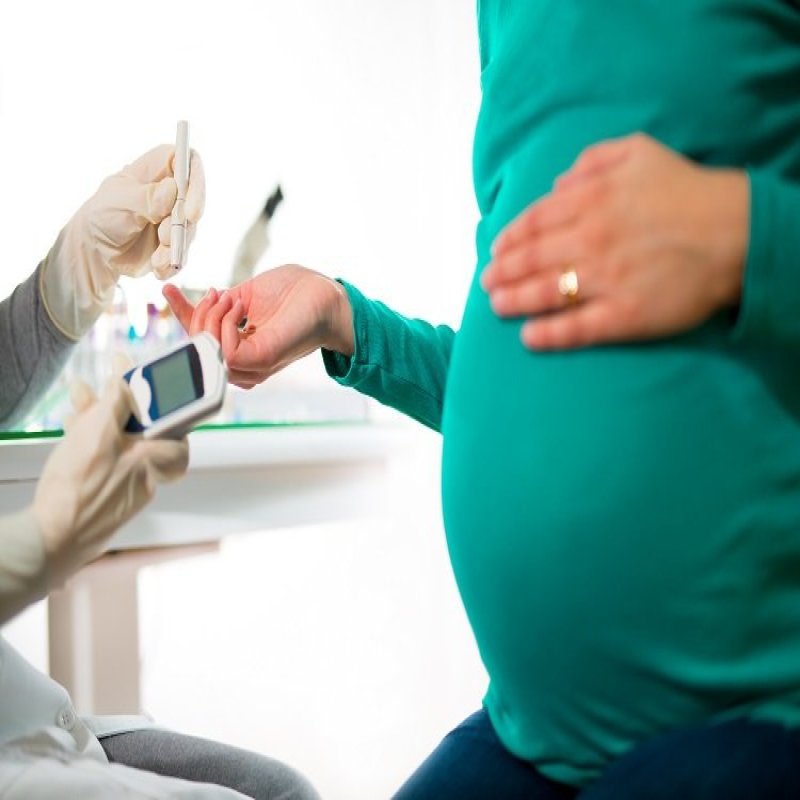
In parallel with the increase in diabetes prevalence, there is an increasing prevalence of gestational diabetes mellitus across the country. Gestational diabetes is more common than you think, with an estimated 4 million women in India being affected by it. It is a condition in which women without diabetes develop high blood sugar levels during pregnancy. It can have adverse effects on the health of the mother and her newborn. Thus, it is crucial to learn more about gestational diabetes and its challenges.
Diabetes can be especially hard on women. The burden of diabetes on women is unique because the disease can affect both mothers and their unborn children. During pregnancy, many women develop gestational diabetes. It can cause severe health complications, but it especially increases the risk of future type 2 diabetes in both the mother and her child.
To read more about type 1 and type 2 diabetes, click here!
What causes Gestational Diabetes?
Though the exact cause of gestational diabetes is unknown, many researchers believe it is related to the hormonal changes during pregnancy. The growing baby inside the mother’s womb releases hormones that support its growth and development. Gestational diabetes starts when these hormones block the action of the mother’s insulin in her body. This is known as insulin resistance, where the body is unable to respond normally to the hormone insulin. Insulin resistance increases blood sugar (glucose) levels as the body is unable to convert glucose into energy due to a lack of insulin.
There are other factors that can increase the risk of gestational diabetes. They are
- Family health or personal health history: The risk of gestational diabetes increases if the mother has prediabetes or a close family member, such as parents or siblings, has type 2 diabetes. The risk also increases if the woman had a previous pregnancy with gestational diabetes or delivered a baby who weighed more than 4 kilograms.

- Obese or overweight: There is a higher chance of developing gestational diabetes if the woman is significantly overweight with a BMI (Body Mass Index) of 30 or higher.
- Ethnicity: Women who are Hispanic, African-American, Native American, American Indian, or Asian are at higher risk of developing gestational diabetes.
- Age: A woman’s risk factor for gestational diabetes increases as she gets older. Especially for women over 35 years of age, there is a higher risk of gestational diabetes during pregnancy.
What are the Symptoms of Gestational Diabetes?
Gestational diabetes usually develops between 24 and 28 weeks of pregnancy. Many women with this condition give birth to healthy babies. However, if the condition is left untreated or poorly controlled, it can affect the mother and the baby adversely. The mother can develop pre-eclampsia or high blood pressure as a result, which can be detrimental to the baby’s health. It also increases the risk of gestational diabetes in future pregnancies and the gradual onset of type 2 diabetes.
Apart from an increased risk of developing type 2 diabetes later in life, there are some other possible complications that might affect the baby. They are:
- Excessive birth weight: The baby can grow larger than usual due to the excess glucose in the mother’s blood. The glucose crosses the placenta and triggers the baby’s pancreas to make extra insulin. Babies weighing more than 4 kilograms may have difficulties during delivery. It also increases the likelihood of induced labor or a caesarean section.
- Low blood sugar: The baby may develop hypoglycemia or low blood sugar after birth because their own insulin production is high. This can cause seizures in the baby. An intravenous glucose infusion is often administered to return the baby’s blood sugar to normal.
- Premature birth: High blood sugar levels in the mother can induce early labor and lead to preterm delivery. Premature babies often suffer from several health complications as they are underdeveloped and weak. However, untreated gestational diabetes can result in a baby’s death either before or shortly after birth.

How to Prevent Gestational Diabetes?
It usually goes away after giving birth. But there is an increased risk of gestational diabetes for such women in future pregnancies. Following a healthier lifestyle, such as a healthy diet pattern, exercising, and losing extra kilos before becoming pregnant, can be helpful. This also reduces the risk of developing type 2 diabetes later in life.
- Eating a healthy diet – Choose foods high in fiber and low in fat and calories. Maintain a variety and include more fruits, vegetables, and whole grains in the diet. Watch portion sizes.
- Read more about managing diabetes with diet and exercise here!
- Exercising – Exercising before and during pregnancy will keep you healthy and can also reduce your risk of developing gestational diabetes. Aim for 30 minutes of moderate physical activities such as walking, swimming or cycling. Regular physical activities will increase your chances of staying healthy.

Weight loss during pregnancy is not advisable. Hence, women who are overweight or obese should work on improving their diet. Eat healthy food and exercise regularly to lose extra weight and have a healthier pregnancy.
Women with gestational diabetes can reduce their chances of having problems during pregnancy by controlling their blood sugar levels. Pregnant women can reduce their blood sugar levels by making changes to their diet and exercising. But a majority of women might need medication as well. If you’re suffering from diabetes or have a higher risk of gestational diabetes, make sure to keep your blood sugar in check before conceiving.


.png)


